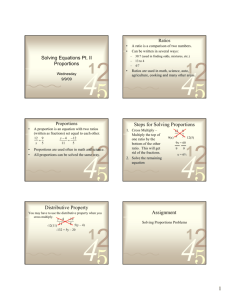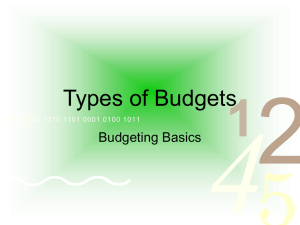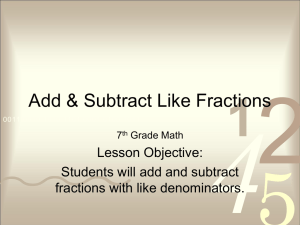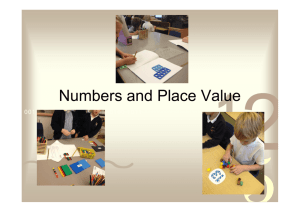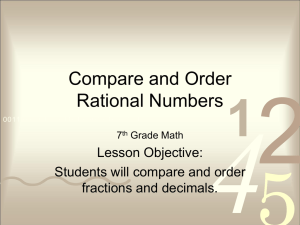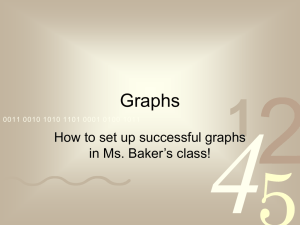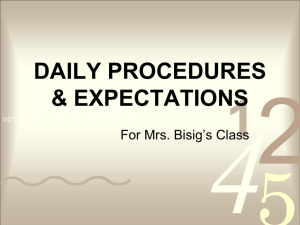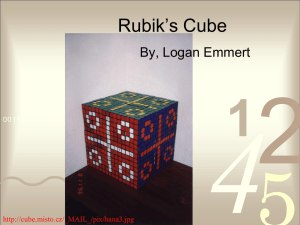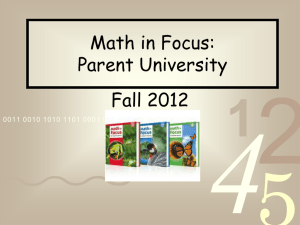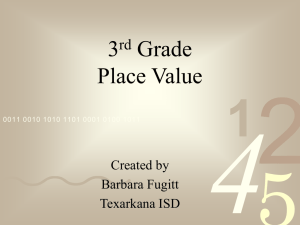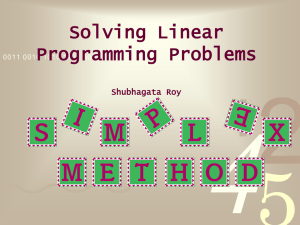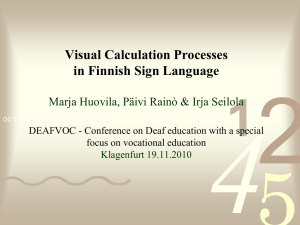Aligned to EGLCEs
advertisement
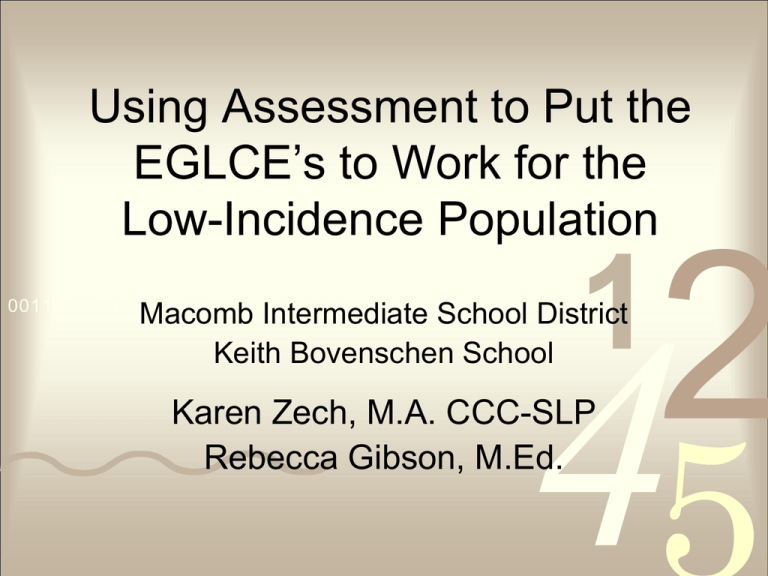
Using Assessment to Put the EGLCE’s to Work for the Low-Incidence Population 0011 0010 1010 1101 0001 0100 1011 1 Macomb Intermediate School District Keith Bovenschen School 2 4 Karen Zech, M.A. CCC-SLP Rebecca Gibson, M.Ed. Keith Bovenschen School 0011 0010 1010 1101 0001 0100 1011 1 2 4 Center Program – 3-26 year olds with moderate, severe, and severe multiple impairments Goals for Session 0011 0010 1010 1101 0001 0100 1011 • Present and review English Language Arts and Math assessments 1 2 • Learn how to use the assessments to create a standards-based IEP 4 History: Where Have We Been? 0011 0010 1010 1101 0001 0100 1011 • Michigan Statewide Curriculum Project Started by SLIP (Supervisors of Low-Incidence Populations) in 2004 Focused on Participation and Supported Independence levels only Created 2 curricula: Participation and Supported Independence 1 2 4 • Aligned with AUEN – the state framework at the time • User friendly • Provided increased accountability to state History: Where Have We Been? 0011 0010 1010 1101 0001 0100 1011 Participation Level Curriculum (AUEN): 5 Performance Expectations (or domains): 1. Engage in Typical Pattern of Leisure and Productivity Activities in their Homes and Communities 2. Engage in Typical Pattern of Interactions 3. Participate in Effective Communication Cycles 4. Participate in Personal Care, Health, and Safety Routines 5. Reach Desired Locations Safely within Familiar Environments 1 2 4 NO ACADEMIC SECTION FOR PARTICIPATION LEVEL CURRICULM!!!! History: Where Have We Been? 0011 0010 1010 1101 0001 0100 1011 Supported Independence Level Curriculum (AUEN): 9 Performance Expectations (or domains): 1. Complete personal care, health, and fitness activities 2. Complete domestic activities in personal living environments 3. Manage personal work assignments 4. Complete activities requiring transactions in the community 5. Participate effectively in group situations 6. Respond effectively to unexpected events and potentially harmful situations 7. Manage unstructured time 8. Proceed appropriately toward the fulfillment of personal desires 9. General Education Core Curriculum: Modified for Students with Cognitive Impairments 1 2 4 Everything Changes… 0011 0010 1010 1101 0001 0100 1011 • MI-ACCESS based on AUEN NOT approved by the Federal Department of Education 1 2 • New MI-ACCESS created based on Extended Grade Level Content Expectations (EGLCEs) 4 Focus shifts onto “Access to General Education” English Language Arts (ELA) Math Science Social Studies (still to come) Now What? 0011 1010 1101 0100 1011 • 0010 Macomb ISD 0001 encouraged the creation of standards-based IEP by aligning objectives to the EGLCEs Provides “Access to General Education” • Educators in district were given a huge binder full of EGLCEs for Supported Independence and Participation levels 1 2 – How exactly are we supposed to go about aligning our goals and objectives? • Not User Friendly • Very overwhelming, don’t know where to start 4 – How do we even know how our students function in relation to the EGLCEs? Do they have some of these skills? • Looked at commercial tests – not age or developmentally appropriate, usually students need to be verbal, skills don’t go low enough for our population of students Solution: Be Proactive and Create Our Own 0011 0010 1010 1101 0001 0100 1011 • Created an English Language Arts (ELA) and Math Assessment Compilation of Sources 1 2 Surveyed teachers about different skills they work on in their classrooms Early Childhood Curricula and Assessments Brigance IED-II Breaking skills down into smaller steps as needed Aligned to EGLCEs 4 Key Points on Assessments • Aligned to EGLCEs - titles of each section on the assessment are the same as the EGLCE strand or domain areas 0011 0010 1010 1101 0001 0100 1011 1 2 • Developmental Sequence - line items are in developmental sequence for the most part, some sections are not as clear cut as others 4 • Continuity of Classroom Programs brings out common language among staff Scoring the Assessment 0011 0010 1010 1101 0001 0100 1011 • Levels of Mastery – Determines to what extent student has mastered the line item • Scoring Rubric 1 2 4 – Describes the prompt level the student requires to complete skill Scoring Rubric 0011 0010 1010 1101 0001 0100 1011 • Cumulative Assessment - designed to be used over time through observations, not just a snapshot • Students’ scores can move horizontally – from one line item to the next • Students’ scores can also move vertically – they might become more independent in a skill over time • Downfall – leaves room for subjectivity 1 2 4 Stop, Absorb, Ask Questions 0011 0010 1010 1101 0001 0100 1011 1 2 4 Creating Standards-Based IEP • Step 1: Assessment 0011 0010 1010 1101 0001 0100 1011 • Step 2: PLAAFP (Present Level, Narrative, Etc.) – use line items from the assessment to describe the skills students can do in relation to content areas – use the levels of mastery to describe those skills – helps your present level stay positive 1 2 4 • Step 3: IEP Objectives – Use line items to decide on appropriate goals and objectives – Use scoring rubric to decide on appropriate criteria – Cite EGLCE using crosswalk You Just Provided Your Student “Access to General Education” !!! EGLCE Crosswalk 0011 0010 1010 1101 0001 0100 1011 • • • • Supported Independence = white Participation = shaded Elementary, Middle, High School columns Last Column – corresponding line items from the assessment 1 2 4 Standards-Based IEP Student Assessmen t Line Item Present Level 0011 0010 1010 1101 0001 0100 1011 13 years old SXI 9 years old MoCI 16 years old SCI IEP Objective Criteria EGLCE Numbers and Operations #13: Basic addition with answers up to 10. Based on the Math Assessment, “student” shows strengths in the area of Numbers and Operation, Data and Probability and Geometry through counting, identifying/matching numbers, understanding which group has more, and sorting by characteristic. “Student” will perform simple addition/ subtraction problems with sums to 9. 4 out of 5 times per session. Reading: Word Study #10: Labels/ Reads color words, number words, calendar words, menu words, names. (at least 5) Based on the ELA assessment, “student” is able to identify her first and last name in print. She is able to identify letters A-M and accurately responds to “who” and “what” questions regarding a story. Recognize/ identifies calendar words (color words, days of the week.) 3 out of 5 times (set of 5-10 words) R.WS.e4.SI.EGO3a Math Data and Probability #7: Sorts objects by one or more characteristics Based on the Math assessment, “student” shows strengths in the areas of Data and Probability and Geometry. “Student” has a basic understanding of 1:1 correspondence and can match items. He does well at following directions and completing puzzles “Student” will sort objects by one or more characteristic. Sorts 20 items by size or shape. EHSCE.P.L1.2.4b Organize data by sorting pictures or objects. N.FL.m7.SI.EGO7a Demonstrate knowledge of basic addition and/or subtraction facts (single digits, no regrouping and sums/differences less than ten). Calculate sums and/or differences using two-digit numbers 1 2 Recognize frequently encountered and personally meaningful words paired with pictures and/or objects (e.g., first name, family members names, colors, shapes, up to 5-10 functional words and/or symbols [stop, men, women, exit, walk]). 4 Additional Advantages 0011 0010 1010 1101 0001 0100 1011 • Used for school/program wide assessment and data collection • Used in creation of school improvement goals • Accountability – you can now say you are providing your students “Access to General Education” • Instructional Rubric in creation 1 2 4 Please make sure to fill out sign-up sheet 0011 0010 1010 1101 0001 0100 1011 for the entire EGLCE Crosswalk and PowerPoint Presentation!!!! Contact Information 1 2 4 Karen Zech - kzech@misd.net Rebecca Gibson – rgibson@misd.net
